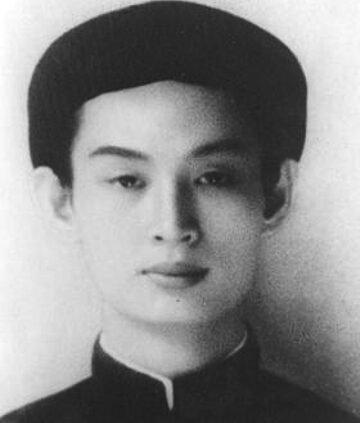While in an illusionary sea of suffering, your karmic impediments for many lives make your soul drown in three domains and six paths, repeatedly descending and ascending, transmigrating, it is all because your misconceptions cause your six-sense organs to get captivated by six-sense objects; these deviations prompt you to take this dirty body for real, and indulge yourselves in your temporary affluence and relationships. You are not aware that the impermanent body is borrowed as it is made up of the four great elements. The affluence is like a floating cloud, your ‘celestial’ beauty is nothing but a flower which blooms at dawn and fades at dusk, it does not endure, however, the soul must suffer punishments for all its sins over one life after the other to pay for compensation.
Nowadays, you have woken up and take refuge in Buddha-Dharma. As you have seen the path to permanence and immortality, rely on your PrajnaBát-nhã (tiếng Phạn: Prajñā, tiếng Nam Phạn: paññā, chữ Hán: 般若) là thuật ngữ Phật giáo, hàm nghĩa Trí tuệ, Tuệ, Nhận thức.https: Phật giáo Nam truyền được truyền bá từ Ấn Độ đến Sri Lanka và các nước trong lục địa Đông Nam Á, đặc biệt là Myanmar, Thái Lan, Lào, Campuchia và Nam Bộ Việt Nam. Đặc điểm chung của hệ Phật giáo Nam truyền là sử dụng hệ kinh điển Pali làm tiêu chuẩn trong thực hành tu tập.[1] Theo truyền thống Phật giáo Nam truyền, kinh văn Pali là những văn bản ghi lại nguyên vẹn những lời giảng của Đức Phật trong suốt cuộc đời truyền bá giáo pháp của mình. Do sự suy tàn của Phật giáo Ấn Độ, nguồn kinh văn Pali chủ yếu được bảo tồn ở Sri Lanka và được phân phối lại cho các vùng lãnh thổ còn lại. Tuy tồn tại những bản dịch bằng ngôn ngữ bản địa để phục vụ cho việc tìm hiểu giáo pháp, nhưng các tu sĩ Nam truyền vẫn sử dụng nguyên ngữ Pali trong quá trình tu tập. and leave the lay world, renounce the bustling modern scene for a quiet place. But, even though you are devoted, you are not yet familiar with the way and path. First, you must carefully grasp the word ‘taking refuge”s: taking refugeQuy là về, mà về đâu ? về cửa Phật. Y có nghĩa là vâng lời theo khuôn mẫu. Vậy Quy-y đầu Phật là nương nhờ cửa Phật và làm y theo lời Phật dạy. Phật từ-thiện cách nào ta phải từ-thiện theo cách nấy. Phật tu cách nào đắc Đạo rồi dạy ta, ta cũng làm theo cách nấy. is ‘go back’, but where to go back?? It means go back to Buddha’s porch. Go back means to ‘obeying to set yourself in a mould’.
Thus, taking refuge is to rely on the Buddha’s porch and listen to His teachings. How benevolent Buddha is, how will we be. Buddha practices which way to become fully enlightened, and teaches us, we will follow which way. Seeing the enlightened by a rightful means, we will quickly obey. It is crucial to keep precepts everyday. Rituals are secondary and are the aids for reminding you to fulfill your duties. I observe that, among the Three Karmas, you are still heavily burdened therewith. In the practice journey, Three Karmas cause you a lot of predicaments. Only if the sentient beings get rid of the Three Karmas, will they be able to go to Buddha land. They consist of: Bodily Karma, Oral Karma, and Mental Karma (review the Khuyen Thien Volume).
But, from my point of view, I see that the Oral Karma is the heaviest. Take your sword of insight to clean up your evil mind, and take your tolerance to treat each other, and take your compassion and humanity to treat everyone. You need to understand the Buddhist concept of Non-Ego. With your efforts, you will receive your Master’s support.
Stanza said:
Dharma ever tends harmonizes well,
Examine others thoroughly and scrutinize yourself.
If they understand their lot, happily tolerate them,
If you can do this, wll they behave the same.
